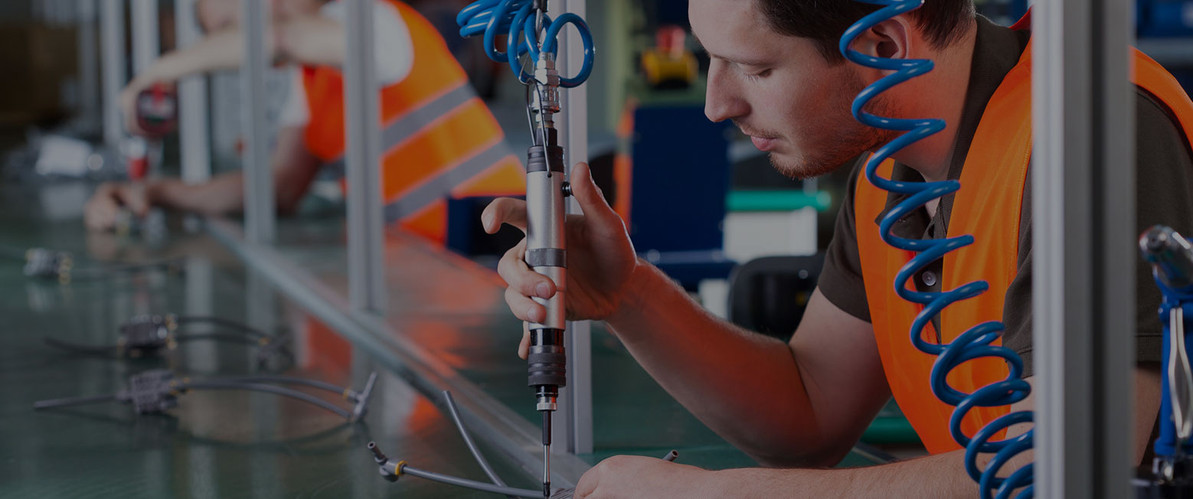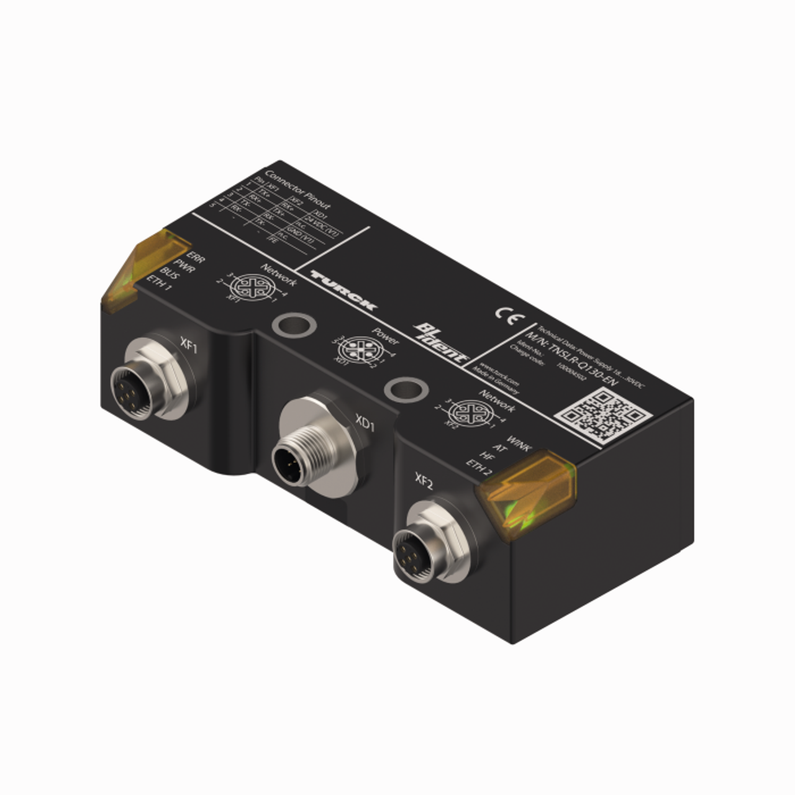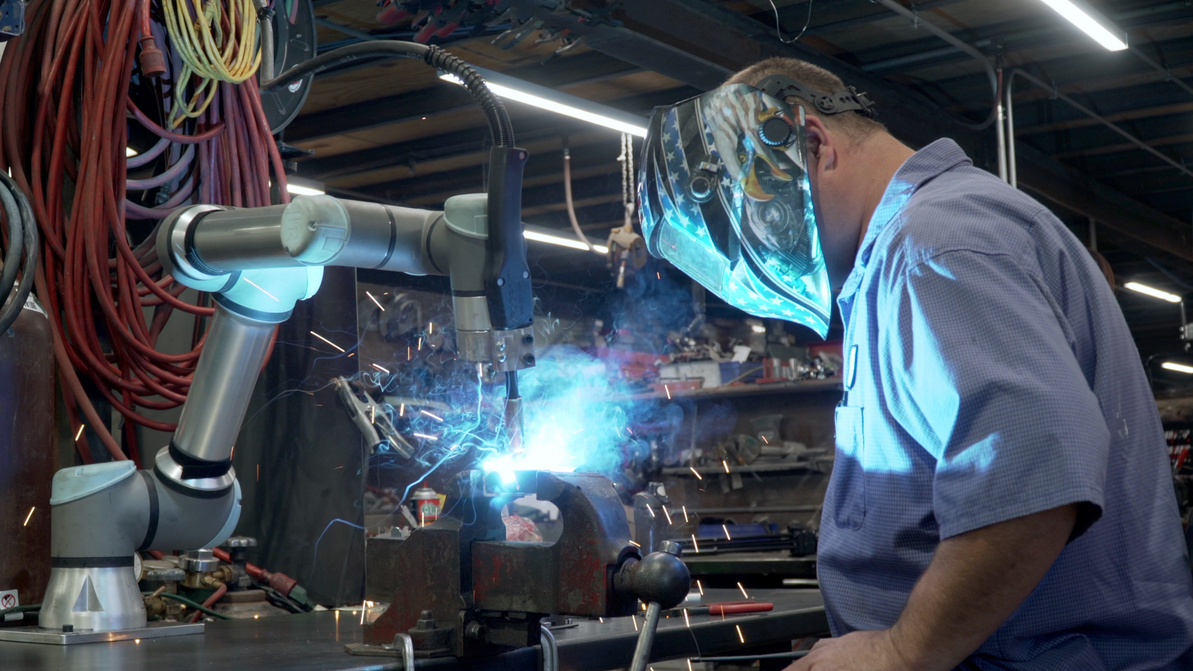Choosing the Right Pneumatic Tubing
Just as the veins carry essentials throughout the body, critical air and fluids follow the tubing used in each part of a machine. Identifying the correct tubing for any industrial automation equipment is critical in prolonging its life.
What kinds of tubing are there?
Polyurethane tubing, which may be abbreviated as PU, PUR, or TPU, tubing is very strong but flexible, kink resistant, has a working pressure of 150 psi and is the most commonly used type of industrial tubing. A variety of push to connect fittings may be used with this tubing, which is available in many colors and sizes. A braided mesh is encapsulated within the wall of the flexible polyurethane and makes it resistant to damage that can cause leaks from factors such as weathering, impact damage, abrasions and tearing, oil and grease. Importantly, polyurethane tubing does not contain a plasticizer that could cause contamination or hardening. Naturally transparent, polyurethane tubing is great for outside use for visual reasons as well as its UV radiation damage resistance. These characteristics of polyurethane tubing make it ideal for coiled, mobile and self-storing pneumatic hose applications.
Polyurethane Tubing
PVC (polyvinyl chloride) is also an excellent choice when a flexible, low-cost solution is required. While not recommended for outdoor exposure, PVC is good for strong acids and alkalies and exceptional for weak acids and alkalies. PVC is resistant to chemicals, corrosion, abrasion and wear, has a rubbery flexibility and visibility with clear styles. Constructions include spiral, wire, and braid reinforcement styles. PVC is available in a variety of formulations ideal for chemical processing, waste lines, water transfer, viscous fluid, vacuum lines, air and gas supply, irrigation systems and small engine fuel lines. A disadvantage to PVC is that it can become less flexible when interacting with certain levels of acid and alkali. Special PVC formulations may be required for fuel and oil applications like those in small engines. Industries that should consider PVC tubing are medical, industrial, laboratory, chemical, food and beverage, appliance, pool and energy.
Nylon tubing and polyethylene tubing use harder plastics and are less flexible than some of their counterparts. These tubes are good for air distribution and straight-line applications. Nylon tubing has a higher working pressure – up to 800 psi – and can withstand temperatures up to 200 degrees Fahrenheit. While more expensive than polyethylene tubing, nylon’s harder wall works better with push to connect fittings and has a more extensive range of chemical compatibilities. It is generally offered in a variety of thicknesses and hardness. While nylon offerings have increased flexibility in recent years, it still requires more room for turns than other types of tubing typically used in pneumatically actuated equipment.
Nylon Tubing
Polyethylene tubing, also known as PE tubing or Poly tubing, was the material of choice for a long time because of its low cost, semi-rigid flexibility, and color options. It works with most push to connect fittings, compression fittings with a plastic sleeve and select barb fittings. With limits on temperature and chemical compatibility, the wall is softer than that of nylon tubing and can disconnect from a fitting when worn out.
PTFE (PolyTetraFluoroEthylene) tubing is temperature resistant from -400 up to 500 degrees Fahrenheit, chemically inert due to its non-reactive carbon-fluorine bonds, and has good dielectric properties which make it ideal for high static applications. PTFE is the most flexible of all fluoropolymer tubing and can be used with virtually all industrial solvents, chemicals, and corrosive materials. Its frictionless qualities improve the flow of viscous liquids. Discovered in 1938, brand name Teflon is the best-known PTFE.
Originally, copper was the material of choice for pneumatic applications and was eventually replaced with plastics. Copper still has its place where rigidity and durability are required. Used extensively to move potable water, copper tubing’s second most popular use is in air conditioning and hydraulic lines. Marine applications include moving seawater and other fluids but marine use is primarily for condensers and auxiliary heat exchangers. Other uses include those in the food and beverage industry like carrying process fluids for beer, spirits, cane sugar refining and other food processing.
Discover Your Tubing Requirements with S.T.A.M.P.
With all the tubing choices available, how do you know which one is best for your application? More likely than not, several types of tubing will be utilized, but the acronym STAMP can help you get started. STAMP stands for Size, Temperature, Application, Media and Pressure.
Size
Tubing is specified by the outside diameter (OD) and a hose is specified by the inside diameter (ID). While the cut length and wall are not to be overlooked, the ID and OD influence the pressure and vacuum ratings. Considering the connection options on the front end will ensure proper fit and reduce problems later on in the process.
Temperature
Temperature resistance has implications throughout the tubing selection process. Other than the obvious operating temperature, cleaning temperature, ambient temperature and temperature fluctuation within the environment should also be considered. Wild fluctuations in temperature can impact performance and create unexpected failures.
Application
A complete understanding of the application where the tubing will be installed is essential. Lack of this understanding can be caused by the end user being hesitant to disclose too much information or just that they really aren’t sure themselves what to use. There are also regulatory restrictions to be considered such as FDA, USDA, 3A, EPA, USP and NSF, which each carry unique compliance codes and may limit tubing material choices. Material selection for clarity, durometer (relative hardness), flexural fatigue, abrasion resistance and peristaltic pump use are dictated by the details of the application. The more information that is available on the full scope of the project, the better tubing selection can be made.
Media
Knowing what is being transported through the tubing is important to assure no extractables, adorption/absorption, and particulate entrapment. Chemicals flowing through the tubing will wear down some tubing materials faster than others. If media fluids will be changed or cleaning agents will be used in the tubing, this should also be taken into careful consideration. Do not forget that ambient chemicals may also be present and should also be factored into tubing selection, whether they are in the atmosphere or the possibility that they may be dripped onto the tubing from a leak or condensation in a separate area. Multi-layer tubing products can assist in especially unpredictable environments.
Understanding the fluid the tubing will carry will ensure the highest efficiency for the project. Tubing is available in a variety of materials, as discussed above, and benefits of each type may be prioritized. For example, some types of tubing offer a tighter tolerance for fittings to prevent leaks while other types feature a smooth inner surface for improved flushing. Safety is another aspect to be considered as some application requirements may dictate that the fluid within the tubes be plainly visible. Colors of tubes may also be required to visually mark the presence of certain chemicals being conveyed for safety reasons.
Pressure
Positive pressure and vacuum put stress on tubes. The impact of increasing or decreasing temperatures can reduce the pressure rating as well, in which case one must attempt to predict the various outcomes for machine health and safety reasons. One option for the purposes of increasing pressure rating is to choose tubing with a different wall thickness or using multi-layered tubes that incorporate more than one tubing material. This can help achieve the ideal pressure and maintain the path. Cleaning cycles must also be taken into consideration at this point because if they are not, cleaning the tubing may become a moot point if the cleaning process will only serve to destroy the tubing.
Pro Tip: To ensure a leak-free connection, use a tube cutter like this one.
Thread Standards
It is important to know that pipe thread and Outside Diameter (OD) are different things. A ¼” tube does not necessarily have a ¼” threaded connection. Here is a breakdown of the standard pipe threads.
NPT (National Pipe Taper) – This is the most commonly used thread standard in the US and has a tapered thread. It is recommended not to mix thread standards on any one piece of equipment since a fitting from another standard will not mate properly with the thread from another standard to create a proper seal, even if it may visually appear that they do. Male thread NPT may also be referred to as MNPT, MPT, and NPT(M); female thread will use an “F” instead. NPT fittings always require the use of sealant, such as Teflon tape, at installation if a sealant is not provided otherwise.
BSPT (British Standard Pipe Taper) – Most often used in Europe, R-thread, as it is also known, may also occasionally be utilized in the US and Canada. BSPT fittings also require a thread sealant at installation if one is not provided by the factory.
BSPP (British Standard Pipe Parallel) – Also referred to as G-thread, BSPP is the least common of the thread standards. It is a straight thread that may sometimes be required to connect specific standardized components. Unlike their counterparts, these threads to not require a sealant because they have an O-ring, seal or bonded washer.
Fittings
Fittings are available in a wide variety of application-appropriate styles including barb fittings, compression fittings, plastic and brass push-to-connect fittings, and metal push-to-connect fittings with plated brass or stainless steel, brass threaded fittings, and quick-disconnect air couplings, commonly used with hoses.
Barb fittings are an easy and effective method to connect flexible tubing and hoses. Barb fittings work by pushing the tubing over a barb that is slightly larger than the inside of the tube. A hose clamp may be used to more tightly secure the tubing, however, barb fittings have a reputation for leaks or separating from the tubing unexpectedly.
Compression Fittings are comprised of a ferrule that covers the outside diameter of the tube and is then tightened between a nut and the other end of the fitting. This style creates a very hardy connection but the process distorts the end of the tube to such a degree that should it require removal, it will likely require tubing replacement to achieve the same security.
Push-to-Connect Fittings allow for easy connection of flexible tubes since the tube is inserted into the fitting. To remove the tube, a release ring is compressed and the tubing simply pulls out. The ease of use and lack of damage to the tube makes push-to-connect fittings very popular for machine and automation projects.
Plastic or brass
push-to-connect fittings are ideal for harsh environments involving high
temperatures and wash-down applications. They incorporate claws for gripping,
thermoplastic with stainless steel tubing, and nickel-plated brass threads.
Brass fittings are a popular choice for pneumatic machines but are not typically used with tubing and hoses. Quick-disconnect air couplings are ideal for applications requiring changes to tools or hoses and are available in multiple sizes and materials.
Not all types of fittings are so straightforward. Some require special fittings, such as applications where valves and cylinders are connected. Purpose-driven push-to-connect fittings may be used to integrate pneumatic components. One situation that may require a special fitting is flow control valves often located on cylinders to control speed. Also available are mini shutoff valves, mini gauges, check valves, and quick exhaust valves, which can control machine pneumatics and monitor usage of air. Many projects require multiple orders to get the correct fittings to create the ideal working process.
Common Causes of Pneumatic Tubing Failure
Pneumatic tube and hose failure is typically caused by incorrect component choices, improper assembly, poor installation standards or a combination of these factors. Visual clues may help reveal which was the root cause.
Failure Type 1: When the fitting has blown off the hose, the hose was not inserted far enough into the fitting at installation. All the grips are required to hold the fitting onto the hose, especially the last one. This type of failure requires a complete replacement of the hose assembly. Make sure the new hose is fully inserted into the fitting or use an insertion-depth gage to adhere to the manufacturer’s recommended insertion value.
Failure Type 2: If a hose has hardened and cracks at room temperature, the material selected was not sufficient to withstand the temperatures required. This will cause the plasticizers that give the hose its flexibility to harden and fail. Another culprit of hardening may be oils that have oxidized the inner part of the tube. A reduction in the temperature of the fluid conveyed through the tubes may resolve this issue. Alternatively, a hose that is more temperature resistant may be required. If ambient heat is causing the problem, a heat guard may be installed around the tube to insulate it. Adding a heat exchanger may also help reduce the temperature of fluids and improve efficiency.
Failure Type 3: A burst hose with a braided reinforcement that does not stick out as if it has burst outright is a sign that a hose has simply reached the end of its life. Sometimes this can be exacerbated by repeated flexing of the same area or a high number of pressure cycles. In this case, replace the assembly and review the process in case a more appropriate tubing or fitting type is available.
Failure Type 4: When the hose features pinhole leaks or bubbles near the fitting, this indicates that the inner tube of the hose was damaged during installation and could also be from lack of lubrication. Incorrect fitting installation can allow moisture to enter around the socket, which will corrode the wires meant for reinforcement. In this event, reevaluate the entire assembly and replace the components.
Failure Type 5: If the inside of the tube is deteriorated, this points to the incorrect tubing was installed to carry the type of fluid material involved. An analysis of the fluid should be conducted and the assembly replaced with compatible tubing material.
Choosing the correct tubing during planning stages and performing ongoing inspections on conditions will help prevent unexpected tubing failures. Tubing requirements can vary depending on operating conditions and those conditions can change from application to application and even change within areas of the same facility. Pressures, pressure-cycles, varying temperatures, and the materials themselves dictate special handling of each tube assembly.
Recent Posts
-
Introducing the Turck Q130 HF Read/Write Head: Revolutionizing RFID Data Management
In today's fast-paced industrial landscape, efficiency and accuracy are paramount. The ability to se …Apr 30th 2024 -
Using Scan Tunnels to Track, Sort and Route Warehouse Packages
If you’re using conveyor lines to move products, packages and shipments through your warehouse, the …Apr 17th 2024 -
Embracing Collaboration: How Universal Robots Transformed DeAngelo Marine Exhaust
When the welding robots made their debut at DeAngelo Marine Exhaust, there was a mix of excitem …Apr 11th 2024







